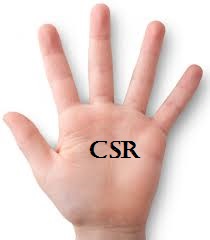Climate change, biodiversity loss, water scarcity, land degradation, air pollution, waste management; these are among the major environmental issues facing global human population. Addressing these global environmental sustainability issues requires much more than treaties, conferences and blueprints; it calls for focused, collective action with a multi-stakeholder approach, incorporating governments, businesses, households and individuals. Whereas there is plethora of treaties ratified by countries across the globe, not much can be said of how these treaties have translated into desired results:
- United Nations Framework Convention on Climate Change (UNFCCC), adopted in 1992, ratified by 197 countries.
- Paris agreement, adopted in 2015 and ratified by 190 countries.
- Convention on Biological Diversity (CBD), adopted in 1992, ratified by 196 countries.
- Montreal Protocol on Substances that Deplete the Ozone Layer, adopted in 1987 and ratified by 197 countries.
- Stockholm Convention on Persistent Organic Pollutants (POPs), adopted in 2001, ratified by 182 countries.
- Rotterdam Convention on the Prior Informed Consent Procedure for Certain Hazardous Chemicals and Pesticides in International Trade. Adopted in 1998 and ratified by 161 countries.
- Basel Convention on the Control of Transboundary Movements of Hazardous Wastes and their Disposal. Adopted in 1989 and ratified by 188 countries.
While governments gather in international conferences drawing up and adopting treaties, industries in their home countries continue their economic activities – hitting production targets, prospecting and fulfilling orders, minimizing economic costs, maximizing profits and paying taxes; all in oblivion of what the treaties say or what they mean. The disconnect between treaties adopted by governments and the actual environmental impact of business activities can be reduced if there can be a bridge connecting the conference rooms where the treaties are signed and the industries creating the economic activities. A good starting point would be to summarize these treatise to an action word or phrase (not necessarily a Mantra) that the industrial actors can identify with and incorporate same into their business strategies – PRODUCT STEWARSHIP.

Product Stewardship
Product stewardship encapsulates the overall concept of designing, producing, and managing products in a way that considers their entire lifecycle, including their environmental and social impacts. The thrust of product stewardship is to minimize the negative impacts of products on the environment and society while maximizing their positive impacts. Put more explicitly, product stewardship requires designing products with sustainability in mind; using environmentally – friendly materials and adopting environmentally friendly production processes; reducing waste and pollution; and promoting product reuse and recycling. Assessing the risks and benefits of products throughout their lifecycle, taking steps to mitigate those risks and improving the products’ environmental and social performance are also among the key actions to secure product stewardship. This has become extremely important as the blocked drains in cities, plastics in oceans, ozone layer depletion, deforestation, air pollution, etc., all have a badge of a known business, posting profits and declaring dividends. In this age of mobile supermarkets where goods are sold in traffic in some less-developed economies, manufacturers reap the benefit of the patronage whilst the Waste management agency is left to clean up the mess. Even in developed societies where regulation is rife, plastics with manufacturer’s labels are found in the oceans and water bodies; most painfully is the practice of shipping environmentally rejected products into less-regulated markets where these toxic products begin a new poisonous lifecycle. Product stewardship knows no borders, respects no skin color and assumes nothing. Product stewardship requires a full lifecycle assessment so we begin to trace the origin and final destination of every product that leaves a factory or plant in any part of the globe. Today, some climes can claim to have a strong system of product stewardship, but a simple lifecycle assessment would show that the same products discarded in their climes have been shipped through their ports with taxes paid to their governments and these products are being sold afresh and used in poorer and less regulated climes. Therefore, product stewardship emphasizes a full lifecycle assessment to ensure complete accountability over products issued to consumers. Product stewardship is as old as human existence and it would be beneficial to bend backwards into history and draw some construct to support the argument.

Traditional Ecological Perspective to Product Stewardship
In the traditional African society, product stewardship is embedded into every economic activity. In the commercial Eastern Nigeria hinterlands, every trader is identified by his stock-in-trade and he/she takes responsibility for any identified pollution or damage attributable to his/her item of trade. For example, when free range Goats eat-up vegetables in the garden, the owner is held accountable to compensate (or placate) the garden owner in a mutually agreeable way. In a more commercial sense, for every market day at Afor Obohia or Eke Akwete in Ukwa East LGA, Abia State, Nigeria, every stall owner has the first responsibility of keeping their stalls tidy, before and after the days business; waste generated by each seller is gathered by he/she and deposited at the designated collection point; in addition, every seller makes a contribution in cash or kind on every market day to the market janitors who maintain the overall sanitation of the market. From ancient to modern: every seller in markets in Lagos – Nigeria pays a monthly fee to LAWMA (the state waste manager) for carting away waste gathered at each market. Note, like the local traders in Obohia or Akwete, the Lagos traders also have the responsibility to gather the waste into the LAWMA collection bins, they also pay for carting away. If the modern-day traders are carrying forward the traditional environmental stewardship, how come the manufacturers sit tight in their offices when the wastes generated from their plants and factories are littering the streets, blocking drains and destroying aquatic life in the oceans. Why are the Multinationals whose oil pipelines polluted Ogoni land and the Niger Delta creeks topping the chart in Stock Exchanges across the globe while the Nigerian government is committing her meagre resources to clean up the land they polluted. Why is Africa currently battling abuse of substances by her youths when those substances can be traced to the product lifecycle of some Pharmaceutical and Chemical giants in developed economies. Why brandish clean energy when the dirty Lithium, Nickel and Cobalt mines are still constituting land degradation. Drawing from the traditional ecological perspective, product stewardship must sit in the corporate culture of organizations and must be practiced by all, with or without external regulation.
What Must We Do?
To make product stewardship effective, it must not be reduced to another regulatory tick-box for industrial actors alone (to fulfil or pay fine); all stakeholders in the product lifecycle, including manufacturers, suppliers, retailers, consumers, and waste management companies must have a role to play. Product stewardship should in the first instance be a corporate sustainability tool the creates the consciousness and guides responsible corporate citizens about how they can integrate global environmental sustainability protocols into their corporate strategies to ensure that their products and services align with the global environmental goals. Secondly, product stewardship should also have a transparent system that drives implementation, monitors progress and redresses irresponsible behaviors. Besides governments and industrial actors, other stakeholders such as consumers, must be integrated into the product stewardship plan with enough education and awareness on the goals of the project in order secure an informed bottom-up civil participation.

To make product stewardship effective, it must not be reduced to another regulatory tick-box for industrial actors alone (to fulfil or pay fine); all stakeholders in the product lifecycle, including manufacturers, suppliers, retailers, consumers, and waste management authorities must have a role to play. Product stewardship should in the first instance be a corporate sustainability tool the creates the consciousness and guides responsible corporate citizens about how they can integrate global environmental sustainability protocols into their corporate strategies to ensure that their products and services align with the global environmental goals. Secondly, product stewardship should also have a transparent system that drives implementation, monitors progress and redresses irresponsible behaviors. Besides governments and industrial actors, other stakeholders such as consumers, must be integrated into the product stewardship plan with enough education and awareness on the goals of the project in order secure an informed bottom-up civil participation. Taking it further:
We must design -out waste: Products designs should take into account sustainability touchpoints across the product’s entire lifecycle. This includes using environmentally friendly materials and production processes, reducing waste and pollution, reduce material intensity, use of recycled materials in preference to virgin materials (where possible), ensuring more durability and full shelf-life usage by avoiding sub-standard products, promoting product reuse and recycling.
Responsibility beyond the factory: Companies should take responsibility for the environmental and social impacts of their products throughout their lifecycle, for as far away (geography) and as long (time) as the products are sold and consumed. This will help check the practice of dumping toxic and environmentally unfit products from areas of full regulation to areas of less or no regulation. This will also ensure that producers begin to consider the lifecycle cost of their products as part of their cost minimization strategies, thereby enforcing end-to-end product efficiency. This will move the hands of industry actors into strategic partnerships with municipal authorities on waste management, collection and recycling.
Global product life cycle assessment: Since the world has become a global village, product lifecycle assessment should no longer be restricted to country of origin. Lifecycle assessment should go beyond bothers to ensure that the global population is guaranteed complete product stewardship. Governments in developed countries must play a significant role in ensuring that what is not good locally should not be shipped off-shore. Products certifications should therefore have a world view rather than being local or regional. And irresponsible behaviors should be adequately reprimanded to ensure that truly, “the polluter Pays.”
Responsible Consumerism: Ignorance on the part of the consumers is swelling the pockets of manufacturers even when the same manufacturers are endangering the life of the society and degrading their environment. Thus we reward inefficiency when consumers are not aware of what standards to demand from manufacturers. Regulators should do more to educate consumers rather than just waiting to collect fines from offenders. The global population and the global ecosystem will benefit more if there are less environmental offenders and a better-informed consuming society.
Social Audit: That regulators can be compromised or commit unintentional blunders is not inevitable. A social audit would empower civil societies and concerned individuals to serve as umpire in enforcing standards for product stewardship and reviewing published stewardship reports. There should also be an active and effective grievance reporting procedures that gives equal access to fair hearing to both the offender and the complainant. In some climes, regulators are quick to become both complainant and arbiter.

Product Stewardship and the SDGs
SDGs 12, 14, 15 and 17 in different aspects emphasized on product stewardship. SDG 12 preaches responsible consumption and production through the use of eco-friendly products and by consciously reducing waste generation. Protecting marine life and the coastal ecosystems are among the key priorities of SDG 14 whereas SDG 15 preaches protection and restoration of terrestrial ecosystems while frowning at improper disposal of waste products. SDG 17 holds the all-important missing link to global environment sustainability – global partnerships. Until governments across the globe begin to partner rather than compete about sustainability, even the SDGs may not yield the global good by 2030. Global partnership in SDG 17 requires that in the pursuit of the sustainable development goals, advanced societies who find sustainable solutions should share the knowledge and support others to learn, rather that the capitalist mindset to cash out always. Today, some parts of the globe are cashing out by sacrificing product stewardship on the alter of profitability at the expense of those who lack the capacity to protect themselves and their environment; unfortunately, the net impact is that the global village suffers. Therefore, there can be no full realization of the sustainable development goals (SDGs) without and effective global system of product stewardship.

The CSR Arena is a CSR advocacy and sustainability-reporting-analysis champion. We encourage and celebrate effective CSR and positive social impact by responsible corporate citizens; we celebrate international best practices in sustainability reporting across different economic divides. Our goal is to realize the dream of development scholars that, ‘corporates, more than governments, would bring about the much needed sustainable development across the globe. We partner with FBOs, NGOs, CBOs, governments and corporates to spread the message of sustainable development and corporate sustainability. Our platforms bear tales of good corporate citizenship – grab the microphone that you may be heard. Contact: news@thecsrarena.com



